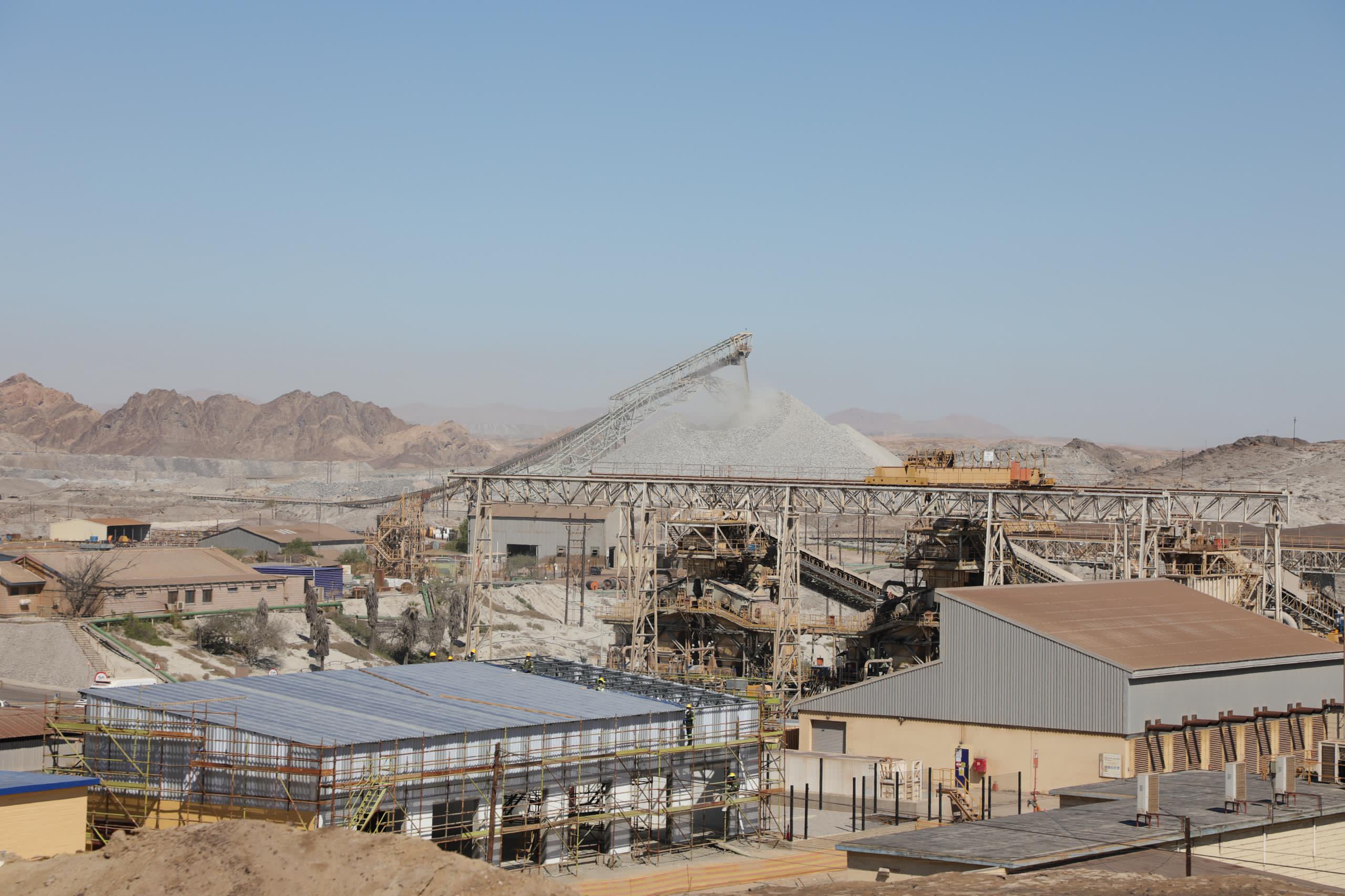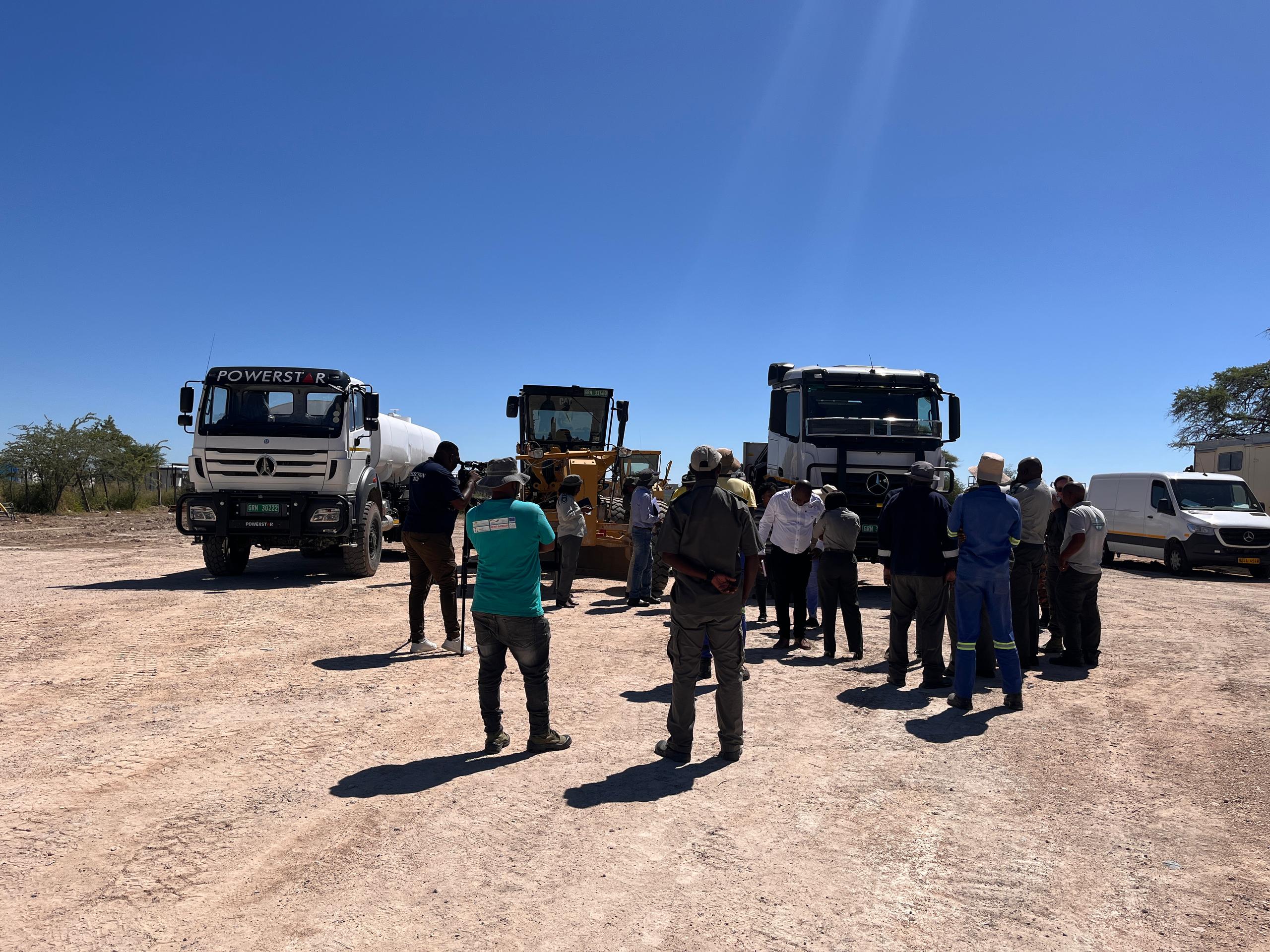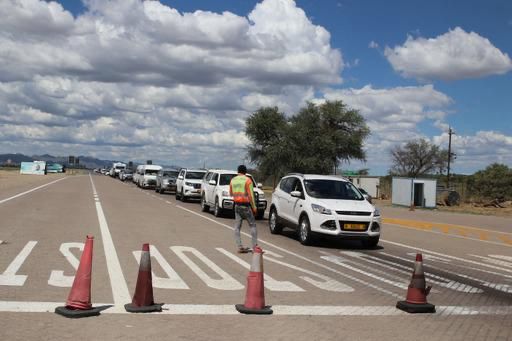THE hands of the San woman nimbly move the head of the axe to chop ostrich eggshells into small pieces, as she hunches in soft sand under the sparse shade of a small tree.
Next to her another family member is rolling a thin stick with a nail attached to its end to drill a small hole into the centre of each piece. The rounded pieces fit neatly into prepared rows of holes in a plank.”You can do something I cannot do and have never seen before,” I say and after my words are translated, smiles break across the women’s faces as they beam with pride.The ice is broken.They make a bracelet for me, but my wrists are much wider than theirs, which starts a humorous debate, articulated in fast and varied click sounds.Their language, Ju/’hoansi, is ancient and complicated and one of several Bushman or San languages spoken among the approximately 30 000 San people living in Namibia.They are at the bottom of the social ladder – poor, far away from modern amenities and mostly unemployed.Tourism is a golden opportunity for them in the Tsumkwe West area, formerly known as Bushmanland.Two community conservancies, Nyae Nyae and N#a Jaqna – together covering 20 000 square kilometres – have been registered with the Ministry of Environment and Tourism in the past years.The families living at Perspeka Village, about 100 people, chose to stay in the bush halfway between Mangetti Dune and Tsumkwe, some 250 kilometres east of Grootfontein.Away from the “negative things of town life”, says Niklaas Gcoma, one of the villagers.Unlicensed shebeens or watering holes in the village of Tsumkwe have cost them many of their hard-earned dollars.The hand-painted signpost they have put up next to the dusty main road shows tourists the way to the “historical devirsity” (sic) of their modest place and traditions.”We work on our own,” the villagers say proudly.The women make bracelets and necklaces; the menfolk traditional bows and arrows.”We either sell directly to tourists coming here seeing the board or we swap our crafts for food and tobacco with the dominee in Tsumkwe.”The dominee is the reverend of the Nederduits Gereformeerde Kerk (NG church) and brings them ostrich eggshells sent from South Africa.”There are no ostriches here any more,” says Lukas G#kao, a cousin of Gcoma.”We hope one day the conservancy will be able to bring in live ostriches.”The church has several San parishes in the area, dating back to South African rule.The South African Defence Force (SADF) fought the Namibian freedom fighters and engaged many San men as trackers and soldiers.It set up army bases in the former Bushmanland, Afrikaans became the lingua franca, the military chaplains were mostly Afrikaners and also preached Christianity to the Ju/’hoansi, many of whom were eventually baptised by the NG Church.The church buys or swaps the crafts and sells them at a modest mark-up for the San.At Perspeka, the families teach their children the old crafts and traditions.All the children of school age go to school at the nearby Aasvoëlnes settlement, a former SADF base at Tsumkwe.”Crafts earn us an income,” says Marta //Cao, the grandmother, whose hands so skilfully chop the shells into tiny pieces.Now the bracelet is finished.There is a moment of silence as her hands fasten it around my wrist – it fits.Hands clap and joyful clicking sounds are heard.”You now wear something from us, we are connected,” Niklaas Gcoma translates for me.SThe rounded pieces fit neatly into prepared rows of holes in a plank.”You can do something I cannot do and have never seen before,” I say and after my words are translated, smiles break across the women’s faces as they beam with pride.The ice is broken.They make a bracelet for me, but my wrists are much wider than theirs, which starts a humorous debate, articulated in fast and varied click sounds.Their language, Ju/’hoansi, is ancient and complicated and one of several Bushman or San languages spoken among the approximately 30 000 San people living in Namibia.They are at the bottom of the social ladder – poor, far away from modern amenities and mostly unemployed.Tourism is a golden opportunity for them in the Tsumkwe West area, formerly known as Bushmanland.Two community conservancies, Nyae Nyae and N#a Jaqna – together covering 20 000 square kilometres – have been registered with the Ministry of Environment and Tourism in the past years.The families living at Perspeka Village, about 100 people, chose to stay in the bush halfway between Mangetti Dune and Tsumkwe, some 250 kilometres east of Grootfontein.Away from the “negative things of town life”, says Niklaas Gcoma, one of the villagers.Unlicensed shebeens or watering holes in the village of Tsumkwe have cost them many of their hard-earned dollars.The hand-painted signpost they have put up next to the dusty main road shows tourists the way to the “historical devirsity” (sic) of their modest place and traditions.”We work on our own,” the villagers say proudly.The women make bracelets and necklaces; the menfolk traditional bows and arrows.”We either sell directly to tourists coming here seeing the board or we swap our crafts for food and tobacco with the dominee in Tsumkwe.”The dominee is the reverend of the Nederduits Gereformeerde Kerk (NG church) and brings them ostrich eggshells sent from South Africa.”There are no ostriches here any more,” says Lukas G#kao, a cousin of Gcoma.”We hope one day the conservancy will be able to bring in live ostriches.”The church has several San parishes in the area, dating back to South African rule.The South African Defence Force (SADF) fought the Namibian freedom fighters and engaged many San men as trackers and soldiers.It set up army bases in the former Bushmanland, Afrikaans became the lingua franca, the military chaplains were mostly Afrikaners and also preached Christianity to the Ju/’hoansi, many of whom were eventually baptised by the NG Church.The church buys or swaps the crafts and sells them at a modest mark-up for the San.At Perspeka, the families teach their children the old crafts and traditions.All the children of school age go to school at the nearby Aasvoëlnes settlement, a former SADF base at Tsumkwe.”Crafts earn us an income,” says Marta //Cao, the grandmother, whose hands so skilfully chop the shells into tiny pieces.Now the bracelet is finished.There is a moment of silence as her hands fasten it around my wrist – it fits.Hands clap and joyful clicking sounds are heard.”You now wear something from us, we are connected,” Niklaas Gcoma translates for me.S
Stay informed with The Namibian – your source for credible journalism. Get in-depth reporting and opinions for
only N$85 a month. Invest in journalism, invest in democracy –
Subscribe Now!










